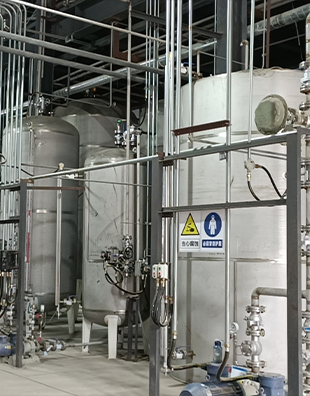Understanding the Processes of Coagulation and Flocculation in Water Treatment Systems
Water Coagulation and Flocculation An Overview
Water treatment is a critical process in ensuring safe drinking water and protecting public health. Among the various techniques employed in this field, coagulation and flocculation stand out as essential steps in the removal of suspended solids, bacteria, and organic materials from water. This article explores the mechanisms of coagulation and flocculation, their importance in water treatment, and the factors that influence their effectiveness.
Coagulation Process
Coagulation is the initial phase of the water treatment process. It involves the addition of coagulants—substances that promote the aggregation of suspended particles. Common coagulants include aluminum sulfate (alum), ferric sulfate, and polyaluminum chloride. When these chemicals are added to water, they destabilize the colloidal particles by neutralizing their negative charges, allowing them to come closer together. The destabilization process is crucial because it enables particles that would otherwise remain suspended in water to begin clumping together.
The efficiency of coagulation can be affected by several factors, including pH, temperature, and water composition. For instance, the optimal pH for most coagulants ranges between 6.5 and 8.5. If the pH is too low or too high, the coagulation process may not proceed effectively, leading to insufficient removal of impurities. Additionally, higher temperatures can enhance coagulation by increasing molecular activity, though they can also accelerate the breakdown of certain coagulants. Thus, careful monitoring and adjustment of conditions are necessary to achieve optimal results.
Flocculation Process
Following coagulation, the flocculation phase begins. This process involves the gentle mixing of water to promote the growth of larger flocs, or clusters of particles. During flocculation, smaller coagulated particles collide with one another and stick together, forming larger aggregates. Mechanical stirrers or slow mixers are typically used to maintain a gentle flow, ensuring that these aggregates can grow without breaking apart.
water coagulation and flocculation

Key to successful flocculation is the retention time; allowing sufficient time for flocs to form and grow is vital for effective removal during subsequent sedimentation or filtration stages. The optimal retention time can vary based on water quality and the type of coagulant used, but it generally ranges from 20 to 60 minutes.
Importance in Water Treatment
Coagulation and flocculation are crucial for a number of reasons. First, they significantly reduce the concentration of turbidity and organic matter, making the water more aesthetically pleasing and safer for human consumption. Effective removal of pathogens is particularly critical in areas with limited access to clean water sources, as it reduces the risk of waterborne diseases.
Moreover, these processes can enhance the efficiency of downstream treatments, such as sedimentation and filtration. By removing the bulk of the particles, coagulation and flocculation decrease the load on these systems, allowing for more efficient operation and lower treatment costs.
Conclusion
In conclusion, water coagulation and flocculation are fundamental processes in water treatment, contributing to the purification and safety of drinking water. By understanding the mechanisms involved and the factors that influence their effectiveness, water treatment facilities can optimize these processes to provide high-quality water to communities. As challenges in water quality continue to evolve, ongoing research and development in coagulation and flocculation methodologies will be essential in meeting the growing demands for clean water worldwide.
-
Water Treatment with Flocculant Water TreatmentNewsJun.12,2025
-
Polymaleic AnhydrideNewsJun.12,2025
-
Polyaspartic AcidNewsJun.12,2025
-
Enhance Industrial Processes with IsothiazolinonesNewsJun.12,2025
-
Enhance Industrial Processes with PBTCA SolutionsNewsJun.12,2025
-
Dodecyldimethylbenzylammonium Chloride SolutionsNewsJun.12,2025





